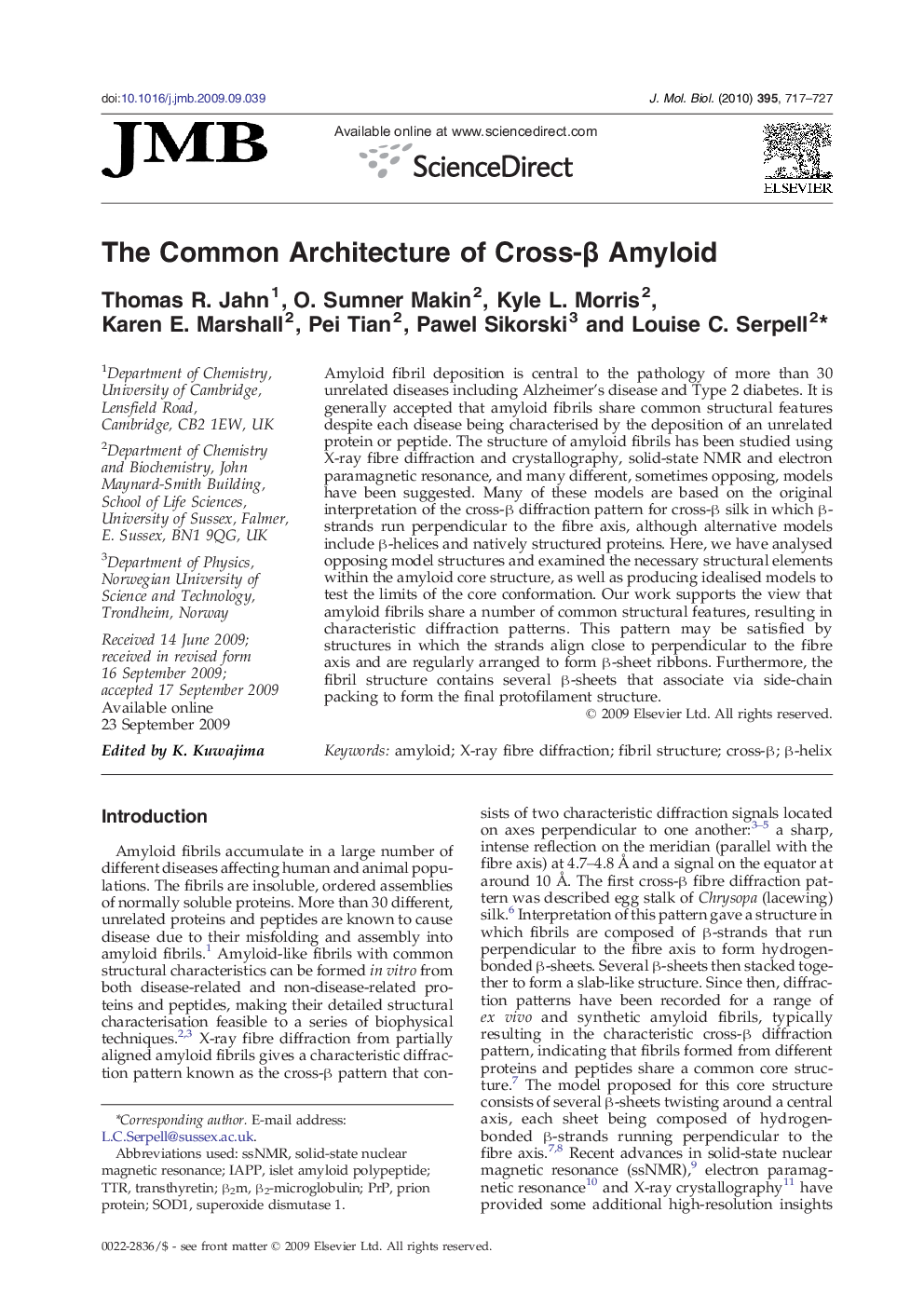| Article ID | Journal | Published Year | Pages | File Type |
|---|---|---|---|---|
| 2186074 | Journal of Molecular Biology | 2010 | 11 Pages |
Amyloid fibril deposition is central to the pathology of more than 30 unrelated diseases including Alzheimer's disease and Type 2 diabetes. It is generally accepted that amyloid fibrils share common structural features despite each disease being characterised by the deposition of an unrelated protein or peptide. The structure of amyloid fibrils has been studied using X-ray fibre diffraction and crystallography, solid-state NMR and electron paramagnetic resonance, and many different, sometimes opposing, models have been suggested. Many of these models are based on the original interpretation of the cross-β diffraction pattern for cross-β silk in which β-strands run perpendicular to the fibre axis, although alternative models include β-helices and natively structured proteins. Here, we have analysed opposing model structures and examined the necessary structural elements within the amyloid core structure, as well as producing idealised models to test the limits of the core conformation. Our work supports the view that amyloid fibrils share a number of common structural features, resulting in characteristic diffraction patterns. This pattern may be satisfied by structures in which the strands align close to perpendicular to the fibre axis and are regularly arranged to form β-sheet ribbons. Furthermore, the fibril structure contains several β-sheets that associate via side-chain packing to form the final protofilament structure.
